Class 7 Exam > Class 7 Notes > Science Class 7 (Old NCERT) > NCERT Summary: Fibre to Fabric
Fibre to Fabric Summary Class 7 NCERT Summary
Animal fibres
- Wool and silk fibres are obtained from animals.
- Wool is obtained from the fleece (hair) of fleece sheep or yak.
Silk fibres come from cocoons of the silk moth.
Wool
- Wool comes from sheep, goat, yak and some other animals who are having hair on their body.
- Wool is derived from these hairy fibres.
Animals that yield wool
- Breeds of sheep are found in different parts of our country are the main source of obtaining wool.

- Yak wool: Obtained from Yaks which is common in Tibet and Ladakh.
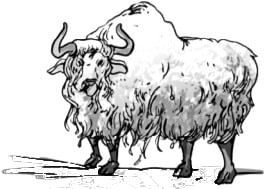
- Angora wool: Obtained from Angora goats found in hilly regions such as Jammu and Kashmir.
- The under fur of Kashmiri goat is soft which is woven into fine shawls called Pashmina shawls.
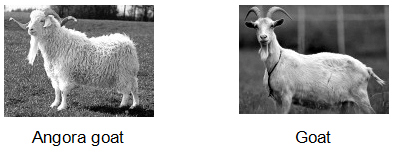
- The fur (hair) on the body of camels.
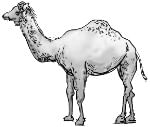
- Llama and Alpaca, found in South America.
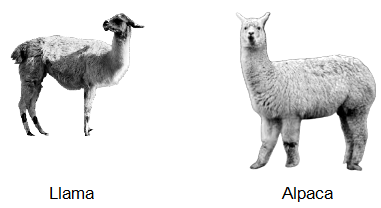
Rearing of Sheep and obtaining fibre
- Sheep are reared in hilly areas of Jammu & Kashmir, Himachal Pradesh, Uttaranchal, Arunachal Pradesh and Sikkim or the plains of Haryana, Punjab, Rajasthan and Gujarat.
- Sheep are herbivores so mainly feed on grass and leaves. They are also provided pulses, corn, jowar, oil cakes and other materials.
- In winter, sheep are kept inside and fed leaves, grass and dry fodder.
- Sheep having thick coat of hair on their body yields good quality wool in large quantities.
- Hair of sheep is shaved off for getting wool, once the reared sheep have developed a thick growth of hair.
List of India breeds of sheep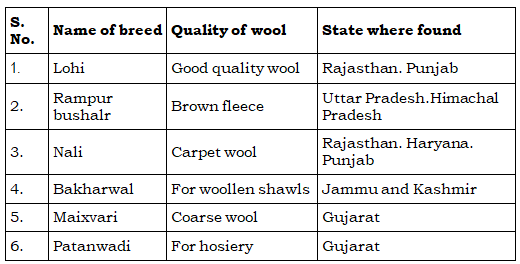
Processing of Wool from Fibre
- Obtaining wool is very long process which involves various steps.
Step 1(Shearing)
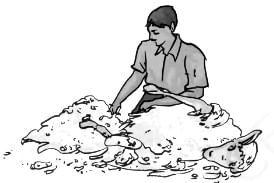
- Fleece of the sheep along with a thin layer of skin is removed from its body which is called Shearing.
- Shearing is done during hot weather so that sheep survive without protective hair.
- The hair or the fleece of the sheep are dead cells so it doesn't hurt the sheep.
- The instrument used to remove the fleece is similar to the shaving instrument.
Step 2 (Scouring)
- Washing of sheared skin with hair in tanks to remove grease, dust and dirt is called scouring. Nowadays scouring is done by machines.

Step 3 (Sorting)
- The hairy skin is sent to a factory where hair of different textures are separated or sorted. This is called sorting.

Step 4
- The small fluffy fibres, called burrs, are picked out from the hair. These are the same burrs which sometimes appear on your sweaters.
- The fibres are scoured again and dried. This is the wool ready to be drawn into fibres.
Step 5
- The fibres can be dyed in various colours, as the natural fleece of sheep and goats is black, brown or white.
Step 6

- The fibres are straightened, combed and rolled into yarn.
- The longer fibres are made into wool for sweaters and the shorter fibres are spun and woven into woollen cloth.
Silk
- Silk fibres are also animal fibres. The rearing of silkworms for obtaining silk is called sericulture.
Life history of silk moth
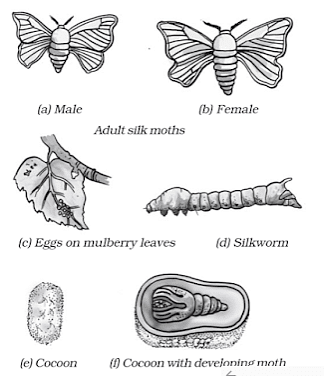
- For obtaining silk, silkworms are reared on a large scale. A female silk moth gives hundreds of eggs on the mulberry leaf.
- The eggs are then hatched by keeping them under the right temperature and humidity conditions.
- Then, the silk caterpillars are fed on mulberry leaves. After 20-25 days, caterpillars stop eating and start spinning cocoons around them.
- Further development of the moth continues inside the cocoon. The moth leaves the cocoon after its development is complete.
- Once the moth has left the cocoon, it is collected to obtain silk.
- The cocoons are kept under the sun or boiled or exposed to steam to separate the silk fibres. This process is known as reeling the silk.
- Silk fibres obtained after reeling are spun into silk threads.
From cocoon to silk
- For obtaining silk, moths are reared and their cocoons are collected to get silk threads.
Rearing silkworms
- A female silk moth lays hundreds of eggs at a time.
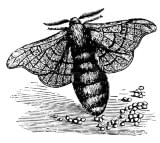
- The eggs are stored carefully on strips of cloth or paper and sold to silkworm farmers.
- The farmers keep eggs under hygienic conditions and under suitable conditions of temperature and humidity.
- The eggs are warmed to a suitable temperature for the larvae to hatch from eggs.
- This is done when mulberry trees bear a fresh crop of leaves.

- The larvae, called caterpillars or silkworms, eat day and night and increase enormously in size.
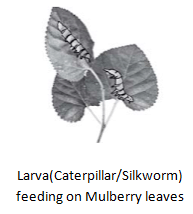
- The worms are kept in clean bamboo trays along with freshly chopped mulberry leaves.
- After 25 to 30 days, the caterpillars stop eating and move to a tiny chamber of bamboo in the tray to spin cocoons.
- Small racks or twigs may be provided in the trays to which cocoons get attached.
- The caterpillar or silkworm spins the cocoon inside which develops the silk moth.
Processing silk
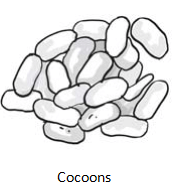
- A pile of cocoons is used for obtaining silk fibres.
- The cocoons are kept under the sun or boiled or exposed to steam.
- The silk fibres separate out. The process of taking out threads from the cocoon for use as silk is called reeling the silk.
- Reeling is done in special machines, which unwind the threads or fibres of silk from the cocoon.
- Silk fibres are then spun into silk threads, which are woven into silk cloth by weavers.
The document Fibre to Fabric Summary Class 7 NCERT Summary is a part of the Class 7 Course Science Class 7 (Old NCERT).
All you need of Class 7 at this link: Class 7
|
112 videos|286 docs|28 tests
|
FAQs on Fibre to Fabric Summary Class 7 NCERT Summary
| 1. What is fibre to fabric? |  |
Ans. Fibre to fabric refers to the process of converting natural fibres obtained from plants and animals into usable fabrics through various stages, including harvesting, cleaning, spinning, weaving or knitting, and finishing.
| 2. What are natural fibres? |  |
Ans. Natural fibres are obtained from plants (such as cotton, jute, and hemp) or animals (such as silk and wool). These fibres are composed of cellulose or protein and are used to make fabrics.
| 3. What is the difference between spinning and weaving? |  |
Ans. Spinning is the process of converting fibres into yarn by twisting them together. Weaving, on the other hand, involves interlacing two sets of yarns - warp and weft - to create a fabric.
| 4. How are synthetic fibres different from natural fibres? |  |
Ans. Synthetic fibres are man-made fibres that are chemically produced, while natural fibres are obtained from plants and animals. Synthetic fibres, such as polyester and nylon, have certain advantages like durability and wrinkle resistance, whereas natural fibres offer breathability and comfort.
| 5. What is the importance of finishing in the fibre to fabric process? |  |
Ans. Finishing is the final stage in the fibre to fabric process, where the fabric undergoes treatments to improve its appearance, texture, and functionality. It includes processes like dyeing, printing, and adding finishes for water resistance, flame retardancy, or wrinkle resistance. Finishing plays a crucial role in enhancing the overall quality and appeal of the fabric.
Related Searches





















